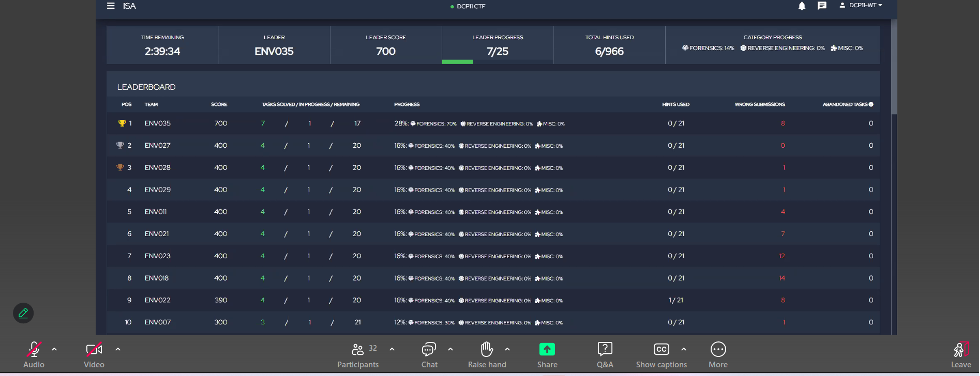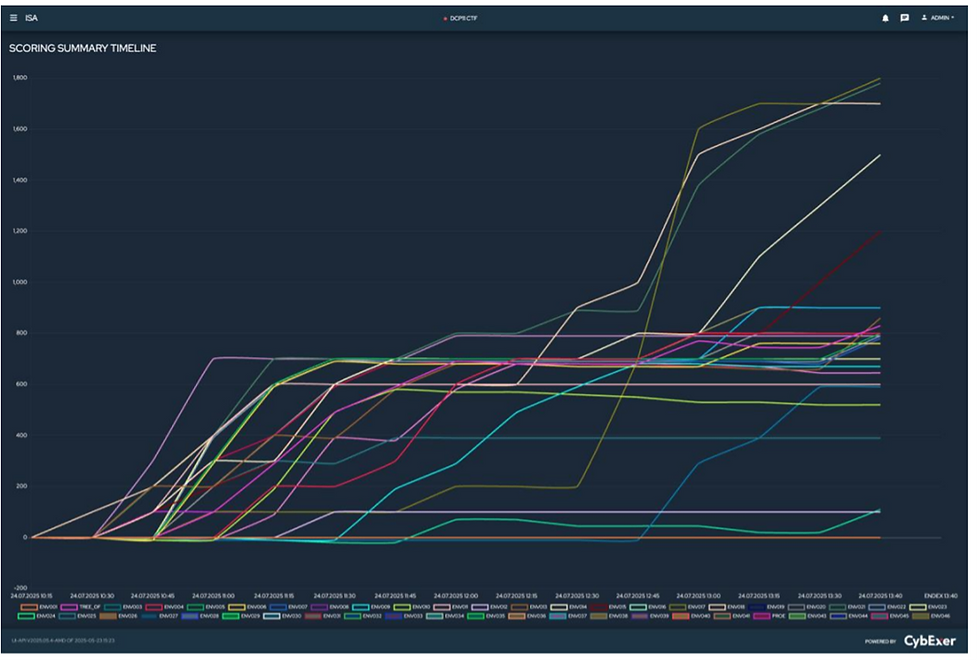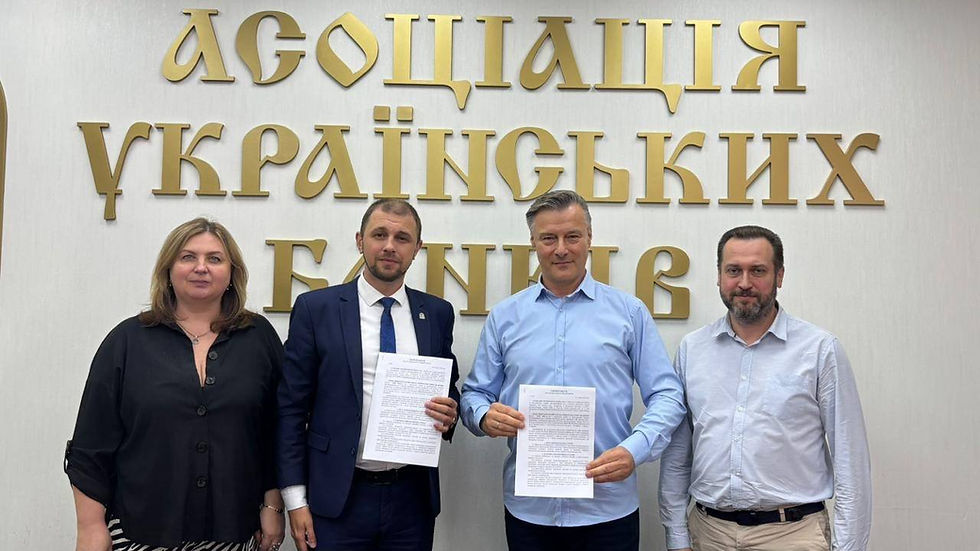Conducting CTF Cyber Competitions and Team Training (TTX)
- Denys Korkin
- Aug 11
- 2 min read
As part of the Development Cooperation Partnership Program (component Cybersecurity and Energy Resilience, supported by the U.S. Embassy in Ukraine and the Ministry of Foreign Affairs of Estonia), the following events were held:
On July 24, a cyber competition on the CTF (CybExer) platform took place, involving more than 30 participants from 20 leading Ukrainian companies in the fuel and energy sector.
On July 30, another important event was organized — sectoral team training (Tabletop Exercise) TTX RESCUE in an online format, with more than 20 participants representing various groups of Ukraine’s fuel and energy complex.
The events were organized by the European Cyber Security Initiative (Estonia) and the educational institution International Cyber Academy (Ukraine), in coordination with the Ministry of Energy of Ukraine.
CTF
The competition’s tasks included hands-on challenges on a dedicated CTF platform, aligned with core cybersecurity concepts, and delivered through realistic scenarios simulating: memory analysis, protocol exploitation, container analysis, vulnerability exploitation, and more.
Participants also worked with various analytical artifacts, enhancing critical investigation and analysis skills.
Despite the large number of tasks, participants demonstrated excellent results!
Task categories were distributed as follows:
54% — Forensics
17% — Exploitation
8% — Cryptography
8% — Fundamentals (obfuscation/reverse scripts)
13% — Miscellaneous (non-standard topics)



TTX
This time, participants used the RiskSight Laboratory’s strategic decision-making platform (STRATEX) to develop and assess group decision-making capabilities for accelerating crisis response.
Simulation scenarios were based on real hybrid threats, their historical patterns, and forecasts for the sector.
During the exercises, participants were able to:
improve their horizontal cooperation level;
better assess their potential to respond to crisis situations caused by cyber incidents;
identify problem areas requiring further joint work and stakeholder involvement;
explore an additional tool that can be useful for the sectoral crisis headquarters.



















